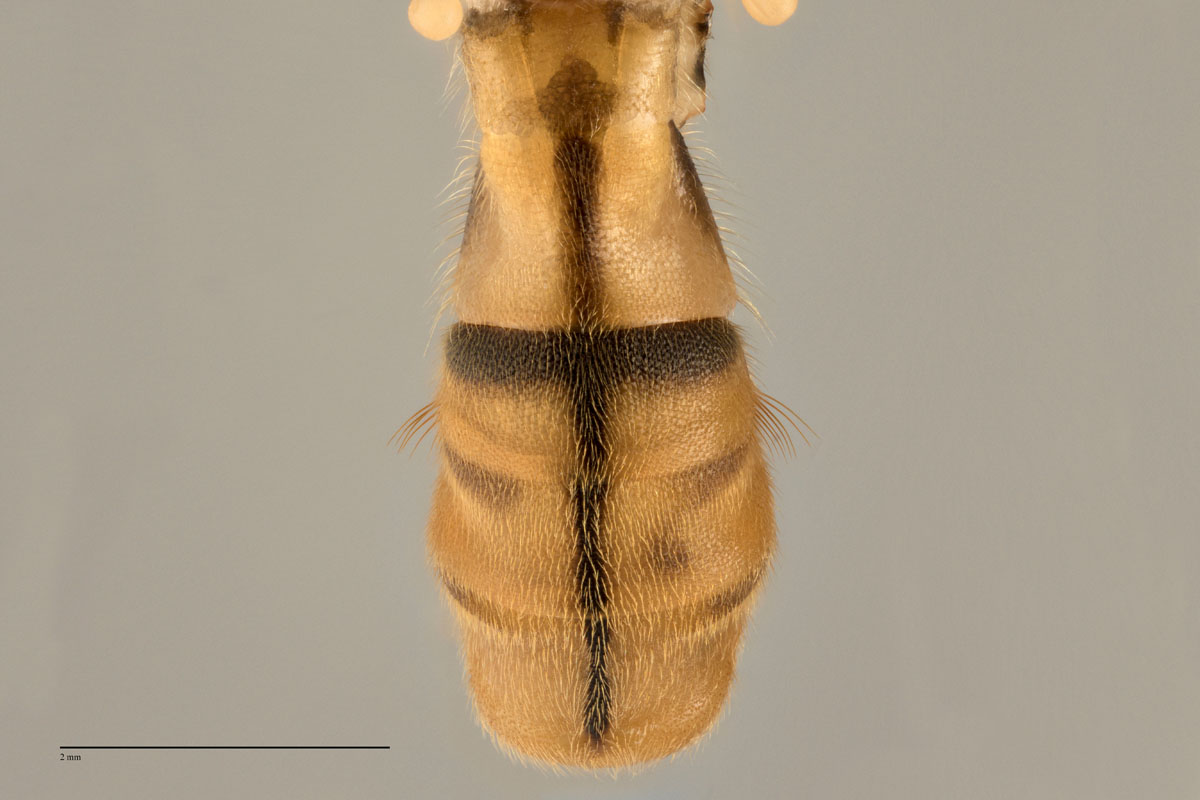Diagnosis
Morphological – adult
A large Callantra-like species. Features include:
- face fulvous with a pair of large elongate black spots filling most of antennal furrow
- postpronotal lobes and notopleura yellow
- a lateral yellow band running from posterior margin of postpronotal lobe towards notopleuron but not reaching notopleuron
- scutum red-brown with a mottled appearance from dorsoventral flight muscles and occasional irregular dark fuscous markings
- lateral and medial postsutural yellow vittae present
- no yellow marking anterior to notopleural suture
- mesopleural stripe reaching anterior npl. seta dorsally
- scutellum yellow
- wing with cells bc and c fuscous, microtrichia covering outer l/2 of cell c only
- a broad fuscous costal band overlapping R4+5, and with a dark fuscous spot within apex of this band
- anal streak absent but with pale fuscous within cell cup
- abdominal terga III-V fulvous to red-brown and generally with a dark fuscous to black ‘T’ pattern and dark fuscous to black anterolateral corners on terga IV and V.
Morphological – larvae
No information available.
Molecular
DNA barcoding
Diagnostic BOLD reference data available.
DDOSTs2 data
B. minax MIN001 Classic specimen DDOSTs2
EIF3L data
B. minax MIN001 Classic specimen EIF3L
FCOI data
B. minax MIN001 Classic specimen FCOI
POP4 data
B. minax MIN001 Classic specimen POP4
RPA2 data
B. minax MIN001 Classic specimen RPA2
PCR-RFLP Test 1
BsrI: Data not available
HinfI: Data not available
HhaI: Data not available
Sau3AI: Data not available
SnaBI: Data not available
SspI: Data not available
Vspl: Data not available
PCR-RFLP Test 2
Data not available.









